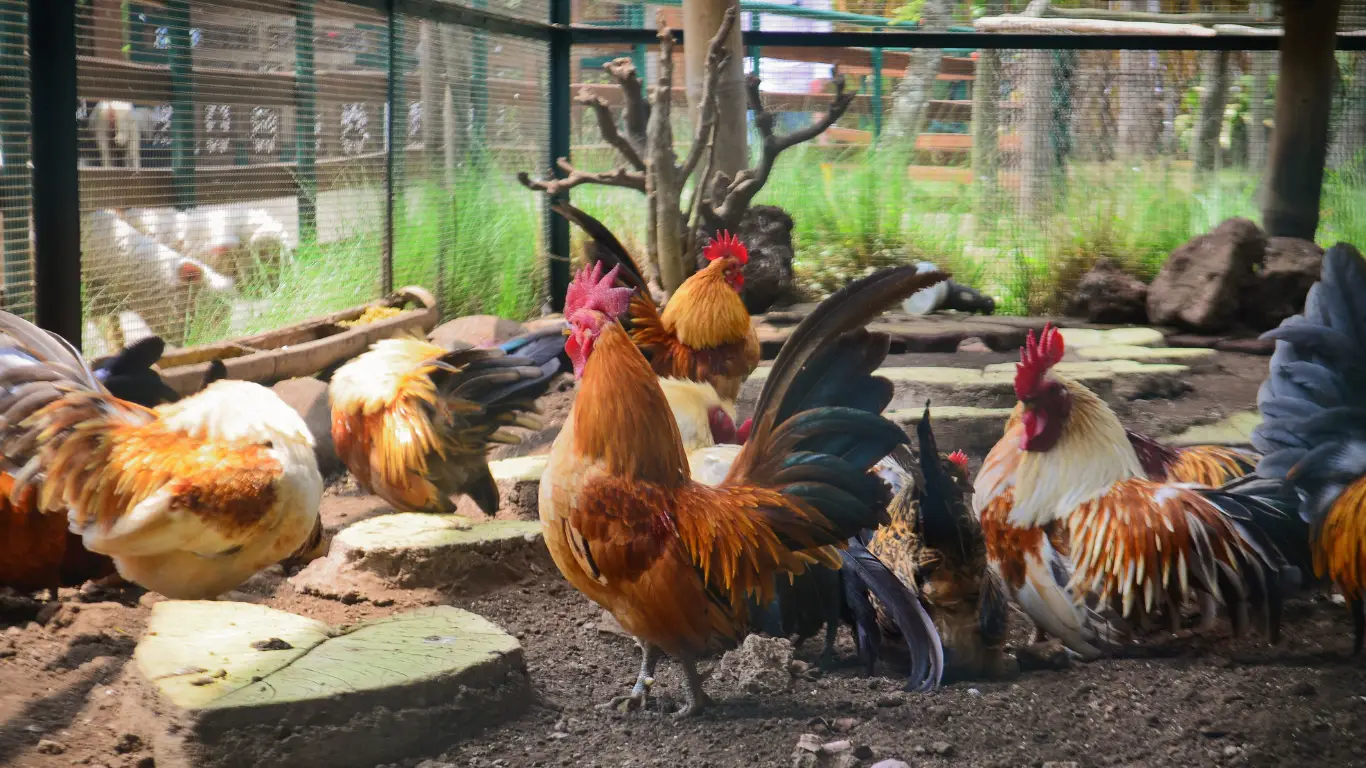Share via:
Chicken Coop Ventilation – How Much Do You Need?
- Summary
- Deep Dive
- FAQs

-
-
-
Summary
Proper chicken coop ventilation is crucial for maintaining a healthy chicken coop, as it prevents the buildup of moisture and ammonia, regulates temperature, and keeps the air fresh. Aim for 1 square foot of vent space for every 10 square feet of coop space, using features like roof vents, windows with mesh, and wall slots. Adjust chicken vents seasonally, keeping openings above roosts to avoid drafts in winter. Signs of poor chicken coop ventilation include strong ammonia smells, damp bedding, frost, or chickens with respiratory issues. Regularly checking and maintaining good airflow will ensure your chickens stay healthy and comfortable year-round.
Keep reading for a deeper dive and FAQs.
Chicken Coop Ventilation
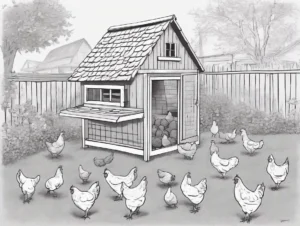
If you own chickens or are thinking about raising them, it’s important to know that ventilation in their coop is essential for their health and comfort. But how much ventilation is enough? Let’s break it down so it’s easy to understand.
Why Is Ventilation Important?
Ventilation is the way air flows in and out of the coop. Chickens breathe out moisture, and their droppings release ammonia gas. Without enough ventilation, these can build up in the air and make your chickens sick. Ventilation also helps keep the coop from getting too hot in the summer or too cold and damp in the winter.
How Much Ventilation Is Needed?
The amount of ventilation a chicken coop needs depends on the size of the coop and the number of chickens you have. A good rule of thumb is to provide 1 square foot of vent space for every 10 square feet of coop space. For example, if your coop is 40 square feet, you should have about 4 square feet of vents.
What Does Good Ventilation Look Like?
Good chicken coop ventilation doesn’t mean leaving the coop wide open. Instead, it’s about having the right kind of openings that allow fresh air to come in while keeping predators and bad weather out. Some examples include:
- Roof vents: These let warm, moist air escape through the top of the coop.
- Windows with wire mesh: These allow airflow while keeping your chickens safe from predators.
- Wall vents or slots: These are small openings on the sides of the coop for extra air circulation.
Tips for All Seasons
Ventilation needs can change with the weather. Here are some tips for year-round comfort:
- Summer: Open as many vents and windows as possible to keep the air cool and fresh.
- Winter: Keep some vents open, even if it’s cold. Warm air inside the coop holds moisture, and if it can’t escape, it will make the coop damp and unhealthy for your chickens. Just make sure the openings are above the chickens’ roosts so they don’t get chilly drafts.
Signs of Poor Ventilation
Not sure if your coop has enough ventilation? Here are some warning signs to watch for:
- A strong smell of ammonia: This means the air isn’t fresh.
- Damp or wet bedding: Too much moisture is staying inside the coop.
- Frost on the walls or chickens’ combs in winter: This happens when warm, moist air freezes.
- Chickens sneezing or having respiratory issues: Poor air quality can make them sick.
Final Thoughts
Getting the right amount of ventilation for your chicken coop takes a little planning, but it’s worth it to keep your chickens healthy and happy. Make sure to check your coop regularly and adjust as needed for the season. Your chickens will thank you with clucks, eggs, and good health!
Additional resources:
- How to build a chicken coop
- how to build a chicken coop roost
- how to build a chicken coop door

-
-
-
Frequently Asked Questions
Chicken Coop Ventilation FAQs
Proper ventilation is a crucial aspect of maintaining a healthy and safe environment for your chickens. Here are some frequently asked questions about chicken coop ventilation:
Why is ventilation important in a chicken coop?
Ventilation is essential to:
- Remove moisture from the air, which reduces the risk of respiratory issues and frostbite in winter.
- Prevent ammonia buildup from chicken droppings, which can harm chickens’ respiratory systems.
- Regulate temperature to keep chickens comfortable in both hot and cold weather.
- Improve air quality and reduce odors.
How much ventilation does a chicken coop need?
As a general rule, at least 1 square foot of ventilation per chicken is recommended. However, the exact amount may vary based on the climate and size of your coop. In hot climates, more ventilation may be necessary, while in cold climates, adjustable ventilation is ideal to balance airflow and warmth.
Where should vents be located in the coop?
Vents should be placed:
- High up on the walls or roof to allow warm, moist air to escape without creating drafts at the chickens’ level.
- Away from roosting areas to prevent direct drafts on the birds.
- On opposite sides of the coop to encourage cross-ventilation.
What types of ventilation are best?
Some effective options include:
- Windows: Add screens to keep predators out while allowing fresh air in.
- Roof vents: Ideal for letting hot air escape.
- Louvered vents: Provide consistent airflow while protecting against rain.
- Hardware cloth-covered openings: Prevent predator access while maintaining ventilation.
How do I maintain proper ventilation in winter?
In winter:
- Keep vents open to prevent moisture buildup, which can lead to frostbite.
- Use adjustable or closeable vents to control airflow on windy days.
- Ensure that vents are positioned above roosting areas to avoid direct drafts.
- Avoid sealing the coop completely, as trapped moisture and ammonia can harm your chickens.
How can I improve ventilation in summer?
To enhance ventilation in hot weather:
- Increase the number of open vents and windows.
- Use fans to boost airflow if natural ventilation is insufficient.
- Provide shade outside the coop to reduce heat buildup.
- Avoid overcrowding, as more chickens produce more heat and moisture.
Can too much ventilation be harmful?
Yes, excessive ventilation or poorly placed vents can create drafts that chill chickens, especially in cold weather. Properly position vents to ensure airflow without exposing chickens to direct drafts.
What are signs of poor ventilation in a chicken coop?
Indicators of inadequate ventilation include:
- A strong ammonia smell.
- Excessive moisture or condensation inside the coop.
- Chickens showing respiratory issues such as coughing or wheezing.
- Frostbite on combs and wattles during winter.
- Overheating or lethargy in chickens during summer.
How can I check if my coop is well-ventilated?
- Perform a smell test—a fresh-smelling coop usually has good ventilation.
- Observe your chickens for signs of discomfort, such as panting or clustering near openings.
- Check for condensation or damp bedding, which indicates excessive moisture.
Proper ventilation is key to a happy and healthy flock. Regularly assess your coop’s airflow and make adjustments as needed based on the season and your chickens’ behavior.
Related Posts

How to Build a Chicken Coop Door
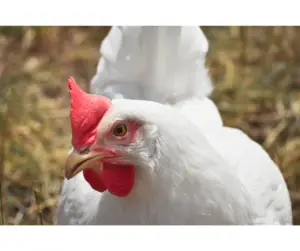
Green Diarrhea in Chickens: What It Means and How to Help
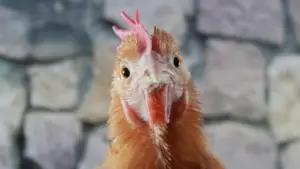
Understanding Diarrhea in Chickens: What You Need to Know
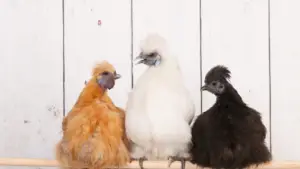
Does My Chicken Have Ascites or Egg Binding?
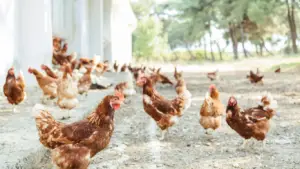
How to Build a Chicken Coop
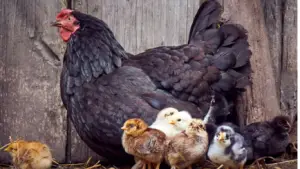
Backyard Chickens in the Winter
Share via:
